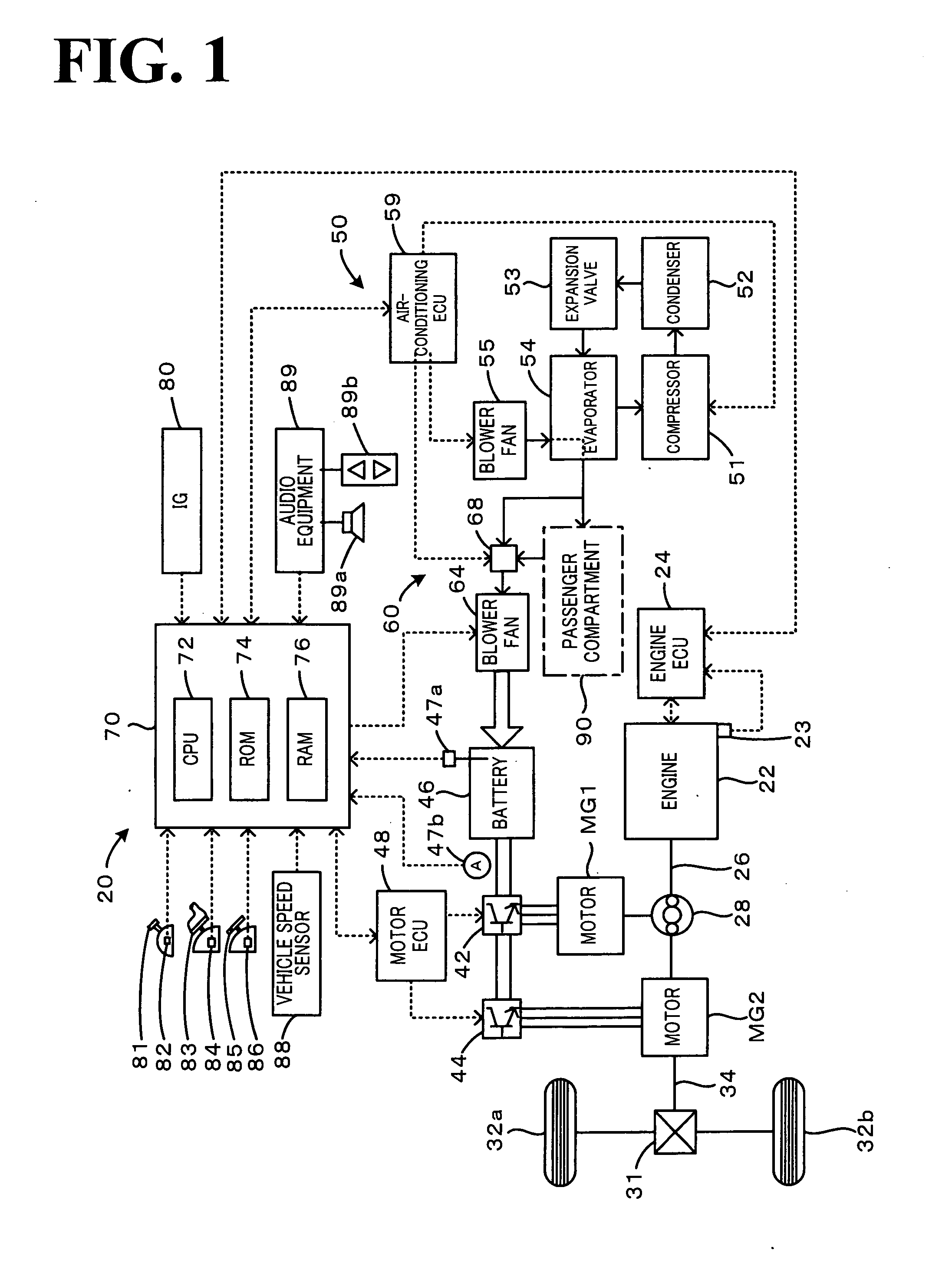Cooling system and control method of cooling system
a technology of cooling system and control method, which is applied in the direction of driver input parameters, external condition input parameters, gas pressure propulsion mounting, etc., can solve the problems of unusual noise, make the driver and the other passengers feel odd and uncomfortable, etc., to reduce the potential for unusual noise, effectively prevent the driver and the other passengers from feeling odd and uncomfortable, and determine the noise level
- Summary
- Abstract
- Description
- Claims
- Application Information
AI Technical Summary
Benefits of technology
Problems solved by technology
Method used
Image
Examples
Embodiment Construction
[0023]One mode of carrying out the invention is described below as a preferred embodiment with reference to the accompanied drawings. FIG. 1 schematically illustrates the configuration of a hybrid vehicle 20 in one embodiment of the invention. FIG. 2 shows the schematic structure of a cooling system 60 for a battery 46 in the embodiment. As illustrated in FIG. 1, the hybrid vehicle 20 of the embodiment has an engine 22, a planetary gear mechanism 28 having a carrier connected to a crankshaft 26 of the engine 22 and a ring gear connected to a driveshaft 34 that is linked with drive wheels 32a and 32b via a differential gear 31, a motor MG1 connected with a sun gear of the planetary gear mechanism 28 and designed to have power generation capability, a motor MG2 designed to input and output power from and to a driveshaft 34, the battery 46 arranged to transmit electric power to and from the motors MG1 and MG2 via inverters 42 and 44, an air conditioner 50 configured to condition the ai...
PUM
 Login to View More
Login to View More Abstract
Description
Claims
Application Information
 Login to View More
Login to View More - R&D
- Intellectual Property
- Life Sciences
- Materials
- Tech Scout
- Unparalleled Data Quality
- Higher Quality Content
- 60% Fewer Hallucinations
Browse by: Latest US Patents, China's latest patents, Technical Efficacy Thesaurus, Application Domain, Technology Topic, Popular Technical Reports.
© 2025 PatSnap. All rights reserved.Legal|Privacy policy|Modern Slavery Act Transparency Statement|Sitemap|About US| Contact US: help@patsnap.com



